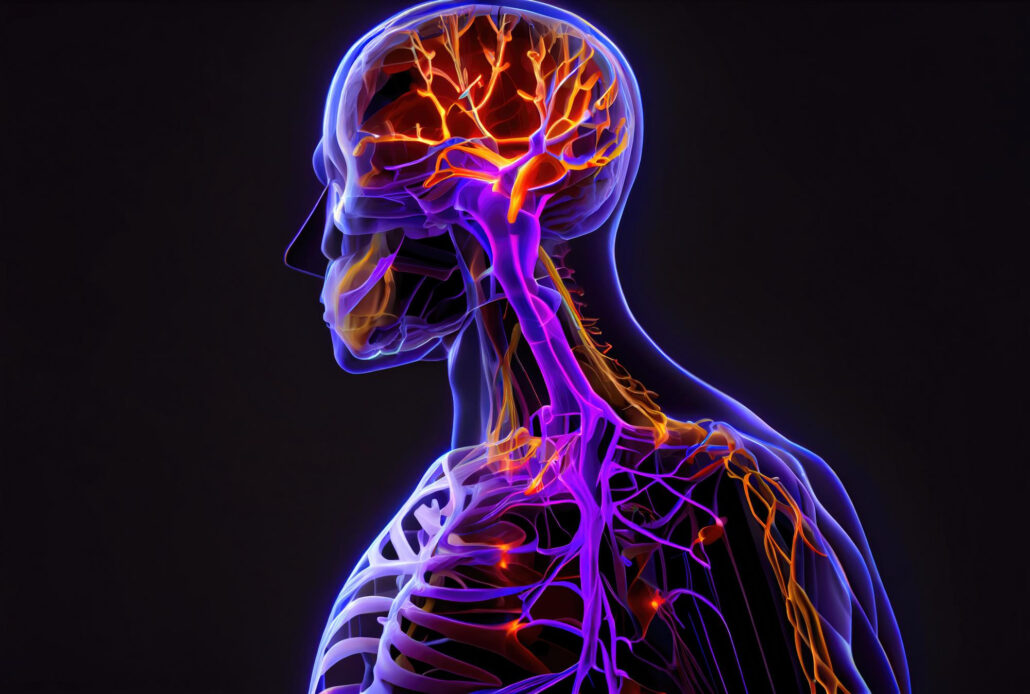PTSD Treatment Study
Researchers at the University of Texas at Dallas are partnering with individuals diagnosed with Post-Traumatic Stress Disorder (PTSD) to evaluate how treatment with vagus nerve stimulation can help. Join our compensated study today!

Fast Facts
diagnosed with PTSD for 3+ months
previous standard PTSD treatment has failed
22-79 years old
Compensation Provided
dallas, tX and austin, TX areas
Study Background
The ReStore System: Vagus Nerve Stimulation for PTSD Treatment
The purpose of this study is to test the safety of using the ReStore System to deliver vagus nerve stimulation during Prolonged Exposure therapy (PE, an evidence-based psychological treatment for PTSD) and see what effects (good and bad) it has on you and others with PTSD. The ReStore System consists of a very small vagus nerve stimulator that is implanted on the vagus nerve in the neck.
Prolonged exposure therapy by itself has been shown to be effective for persons diagnosed with PTSD. Adding vagus nerve stimulation (VNS) triggers the vagus nerve, which is a part of the nervous system responsible for providing signals between the brain and body. Studies in animals show that VNS enhances extinction learning, a form of learning in which fears are progressively weakened. Reduction in fear is thought to be important for the treatment of PTSD.
During therapy, you will wear a neckband to trigger VNS. You will be in the study for about one year. Long-term assessment of safety will be performed twice yearly for up to 2 years after your implant date when possible.
Your participation in this study may help researchers improve treatment approaches for PTSD. Further research today and join our compensated study!

Study Background
The ReStore System: Vagus Nerve Stimulation for PTSD Treatment
The purpose of this study is to test the safety of using the ReStore System to deliver vagus nerve stimulation during Prolonged Exposure therapy (PE, a psychological treatment for PTSD) and see what effects (good and bad) it has on you and others with PTSD. The ReStore System consists of a very small vagus nerve stimulator that is implanted on the vagus nerve in the neck.
Prolonged exposure therapy by itself has been shown to be effective for persons diagnosed with PTSD. Adding vagus nerve stimulation (VNS) triggers the vagus nerve, which is a part of the nervous system responsible for providing signals between the brain and body. Studies in animals show that VNS enhances extinction learning, a form of learning in which fears are progressively weakened. Reduction in fear is thought to be important for the treatment of PTSD.
During therapy, you will wear a neckband to trigger VNS. You will be in the study for about one year. Long-term assessment of safety will be performed twice yearly for up to 2 years after your implant date when possible.
Your participation in this study may help researchers improve treatment approaches for PTSD. Further research today and join our compensated study!
Additional Information
You may qualify for this study if you meet the following criteria.
Key Criteria:
- 22-79 years old
- Diagnosed with PTSD for at least 3 months
- Attempted at least one treatment for PTSD that proved unsuccessful
- Not currently receiving prolonged exposure therapy for PTSD elsewhere
- Not currently taking part in another research study that involves medical treatments or interventions
- Never experienced an injury to the vagus nerve
- Never received prior or current treatment with vagus nerve stimulation
- Not pregnant or planning to become pregnant in the next 6 months
- If applicable, willing to use a medically acceptable birth control method (implant, IUD, oral contraceptives, patch, ring, sterilization) for the duration of the study
- Read and speak English
Participation in the study consists of about 33 study visits, including:
(1) Pre-therapy phase: A 6-week period involving consent, screening, surgery to implant the VNS device, and recovery.
(2) Phase 1 Blinded: A 10-week treatment phase involving 12 Prolonged Exposure therapy sessions with either active VNS or sham VNS, depending on group assignment (determined randomly, like a flip of a coin). The active VNS group will get stimulation of the vagus nerve. The sham VNS group will not get stimulation.
(3) Phase 2 Open Label: A 10-week treatment phase including up to 12 PE sessions with active VNS for all participants, followed by additional assessments. Participants will undergo assessments to see how they are doing throughout participation, and safety will be assessed twice yearly, for up to 2-years after implant date.




